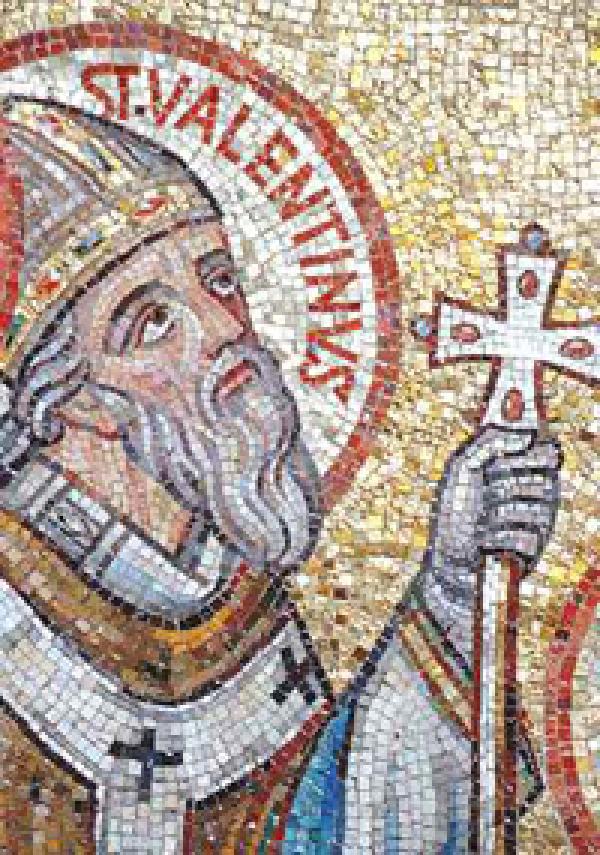Saint Valentine (in Latin, Valentinus) is a widely recognized third-century Roman saint commemorated on February 14 and associated since the High Middle Ages with a tradition of courtly love. Nothing is reliably known of St. Valentine except his name and the fact that he died on February 14 on Via Flaminia in the north of Rome. It is uncertain whether St. Valentine is to be identified as one saint or two saints of the same name. Several differing martyrologies have been added to later hagiographies that are unreliable. For these reasons this liturgical commemoration was not kept in the Catholic calendar of saints for universal liturgical veneration as revised in 1969. But the "Martyr Valentinus who died on the 14th of February on the Via Flaminia close to the Milvian bridge in Rome" still remains in the list of officially recognized saints for local veneration. Saint Valentine's Church in Rome, built in 1960 for the needs of the Olympic Village, continues as a modern, well-visited parish church. Today, Saint Valentine's Day, also known as the Feast of Saint Valentine, is an official feast day in the Anglican Communion, as well as in the Lutheran Church. In the Eastern Orthodox Church, Saint Valentine the Presbyter is celebrated on July 6 and Hieromartyr Saint Valentine (Bishop of Interamna, Terni in Italy) is celebrated on July 30. Notwithstanding, because of the relative obscurity of this western saint in the East, members of the Greek Orthodox Church named Valentinos (male) or Valentina (female) may celebrate their name day on the Western ecclesiastical calendar date of February 14. English eighteenth-century antiquarians Alban Butler and Francis Douce, noting the obscurity of Saint Valentine's identity, suggested that Valentine's Day was created as an attempt to supersede the pagan holiday of Lupercalia (mid-February in Rome). This idea has lately been contested by Professor Jack Oruch of the University of Kansas. Many of the current legends that characterise Saint Valentine were invented in the fourteenth century in England, notably by Geoffrey Chaucer and his circle, when the feast day of February 14 first became associated with romantic love. Historian Jack Oruch has made the case that the traditions associated with "Valentine's Day", documented in Geoffrey Chaucer's Parliament of Foules and set in the fictional context of an old tradition, did not exist before Chaucer. He argues that the speculative explanation of sentimental customs, posing as historical fact, had their origins among 18th-century antiquaries, notably Alban Butler, the author of Butler's Lives of Saints, and have been perpetuated even by respectable modern scholars. In the French 14th-century manuscript illumination from a Vies des Saints (illustration above), Saint Valentine, bishop of Terni, oversees the construction of his basilica at Terni; there is no suggestion here that the bishop was a patron of lovers.
Source: Wikipedia

